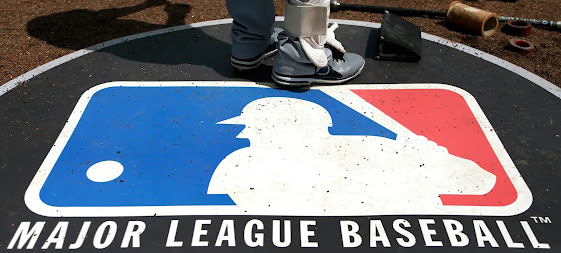Over the past half-century, the average length of an MLB game has risen from about 2 1/2 hours to 3 hours and 11 minutes. Meanwhile, the number of balls in play has dwindled. Hits are near historic lows and strikeouts at historic highs.
According to MLB, the time between batted balls has reached an average of nearly four minutes, up by almost a minute from two decades ago.
The game has simply become slow and boring, with too little action.
MLB's own surveys show that fans most want to see triples and steals, both of which rarely occur these days.
Three players tied for the major league with eight triples this season, and just 14 players had as many as five.
Not a single player stole 50 bases this season and just two stole at least 40; Starling Marte swiped 47 bags and Whit Merrifield stole exactly 40.
Here are some rule changes that would benefit baseball:
Universal Designated Hitter
Out of the 713 pitchers who appeared in the big leagues in 2021, just 20 had at least 50 at-bats and a mere two had at least 60 at-bats. Seventeen of them batted below .200; 13 of them batted below .150; and six of them batted below .100.
Pitchers are essentially an automatic out. Their at bats are an exercise in futility in a game that already has far too few hits. It’s time for a universal DH.
Automated Strike Zone
Strike zones are inconsistent across baseball and have become subjective, catering to the whims of the umpires behind the plate. Making the correct call is vital to the game and incorrect calls are affecting games.
Umpires would remain behind the plate to call runners safe or out, to determine if a batter was hit by a pitch, and to call check swings or misses.
Pitch Clock
Football and basketball both have play clocks to keep the action rolling. Why not baseball as well, the slowest of the team sports? Many fans don't realize that there is already a rule on the books governing this.
Rule 8.04 states:
"When the bases are unoccupied, the pitcher shall deliver the ball to the batter within 12 seconds after he receives the ball. Each time the pitcher delays the game by violating this rule, the umpire shall call “Ball.”
"The 12-second timing starts when the pitcher is in possession of the ball and the batter is in the box, alert to the pitcher. The timing stops when the pitcher releases the ball.
"The intent of this rule is to avoid unnecessary delays. The umpire shall insist that the catcher return the ball promptly to the pitcher, and that the pitcher take his position on the rubber promptly. Obvious delay by the pitcher should instantly be penalized by the umpire."
It's time to enforce it.
No More Warmup Pitches for Relievers Entering the Game
This is why there's a bullpen... for warming up.
Ban Defensive Shifts
Two infielders must be positioned on each side of second base, and all four must remain on the dirt until the ball is hit. Shifts are killing offense, making the game boring and predictable.
Make all Salaries Merit Based
If a rookie has a breakout year and is top-10 in multiple categories, he should be paid like a top-10 player; no need to wait for arbitration or free agency. On the other hand, aging, underperforming veterans should not be making tens of millions per year. Pay must be tied to performance. This might require abandoning the Luxury Tax Threshold. Yet, owners might appreciate paying for current performance, rather than past performance.
Implement a Salary Floor
The problem with MLB's revenue-sharing model is that teams aren’t required to reinvest that money directly into improving the on-field product. Perhaps a specific figure for the floor, say $100 million, is too arbitrary or difficult for some small market clubs to meet. Yet, mandating that all teams that receive revenue-sharing money must allocate a certain percentage of it directly towards players' salaries would help to improve the competitive balance in baseball.
Major League Baseball has lots of work to do to bring fans back into parks and viewers to television screens. The sport’s popularity has been steadily declining and even the World Series' ratings have regularly fallen since 2003, dropping to a new low of 5.1 in 2020. Whereas the 2003 World Series averaged 25.47 million viewers, the 2020 World Series averaged just 9.78 million.
MLB welcomed fans back into the stands in 2021, but attendance was at a generational low. The league saw 45.3 million fans attend regular-season games in 2021, a 33.9% drop from the 68.5 million in 2019, and the lowest figure since 1984.
Changes are long overdue. The current Collective Bargaining Agreement expires one month from today (Dec. 1). Let’s hope the owners and players recognize how serious their predicament really is, and that they take action to make the game more attractive and entertaining for younger and older fans alike.

